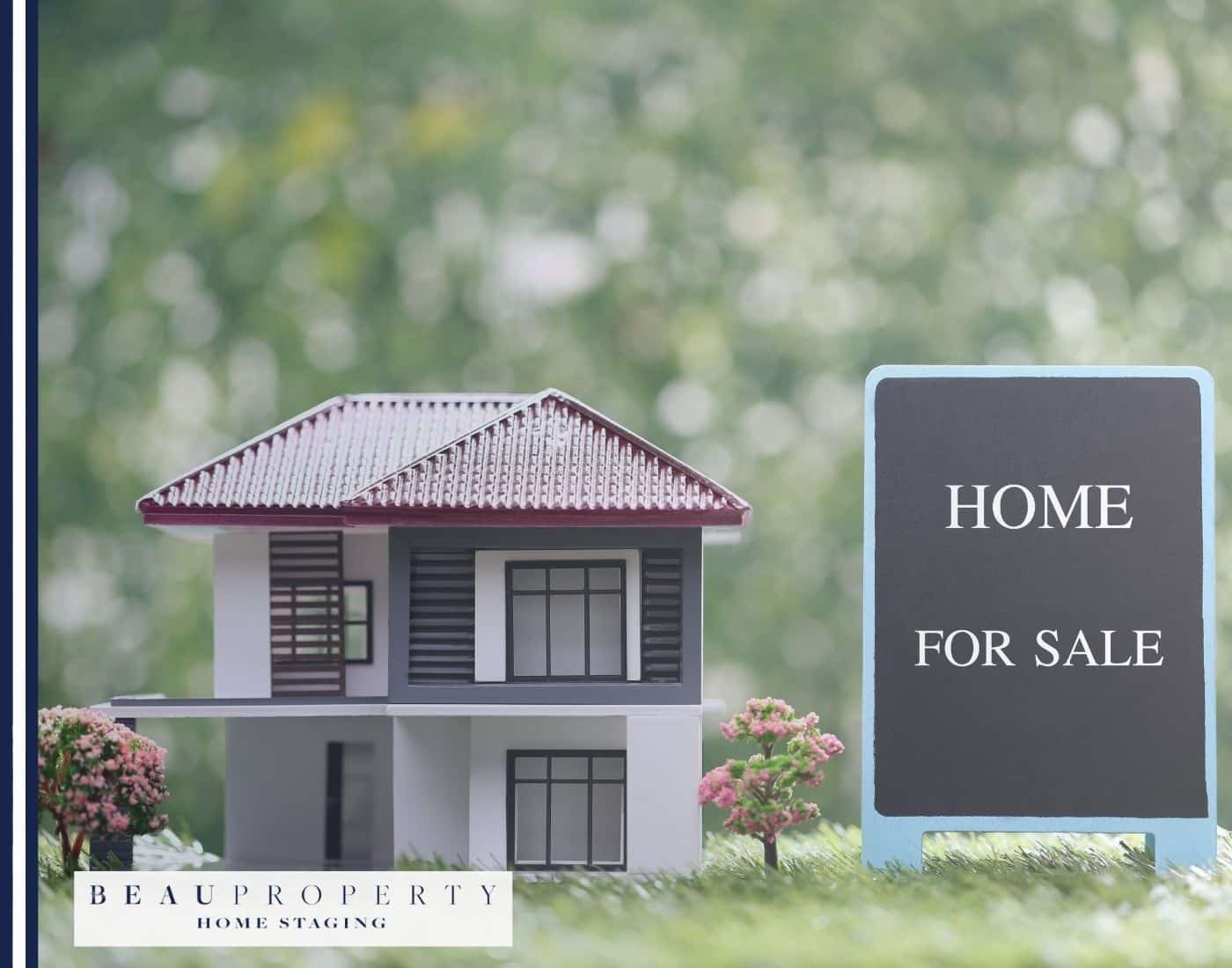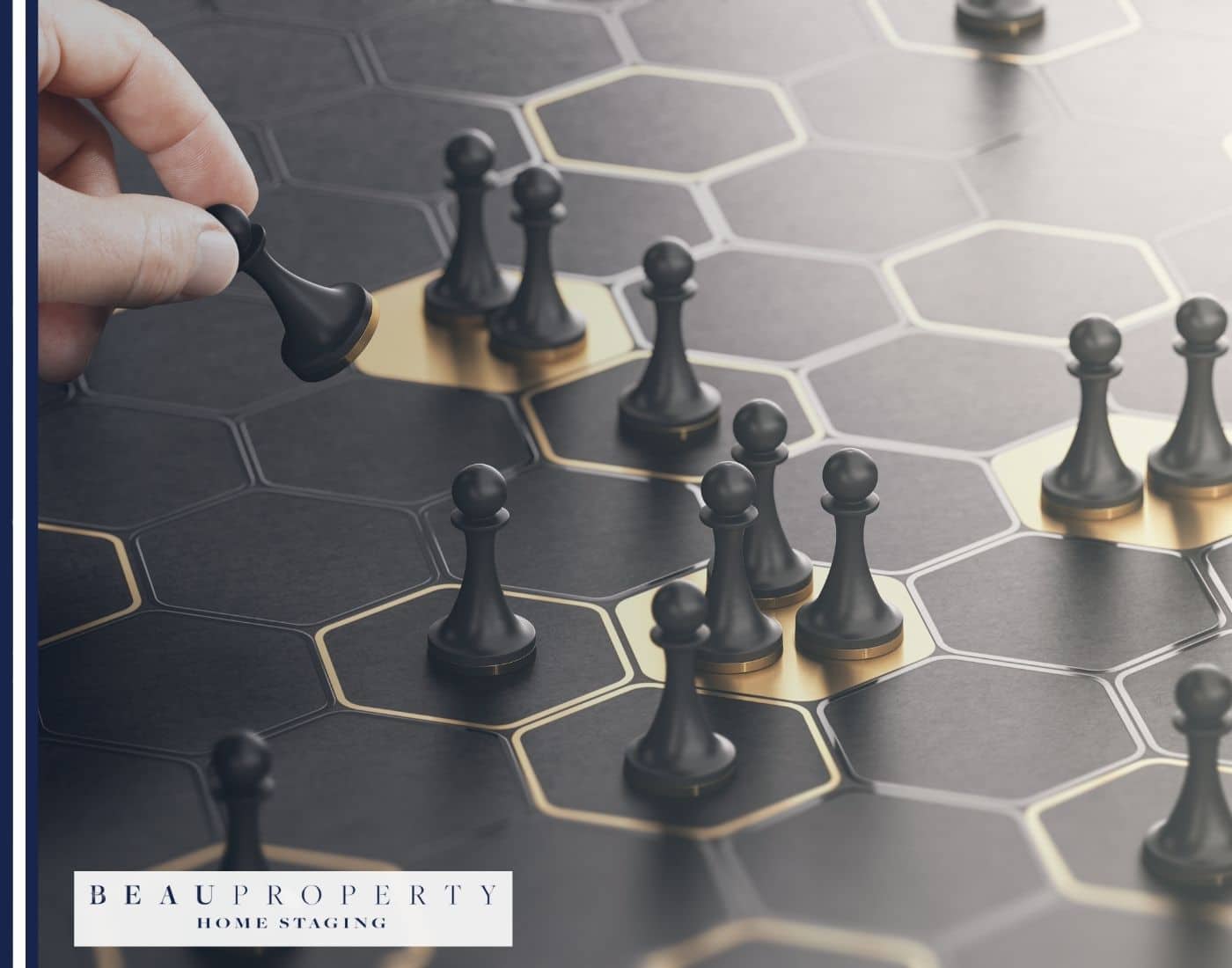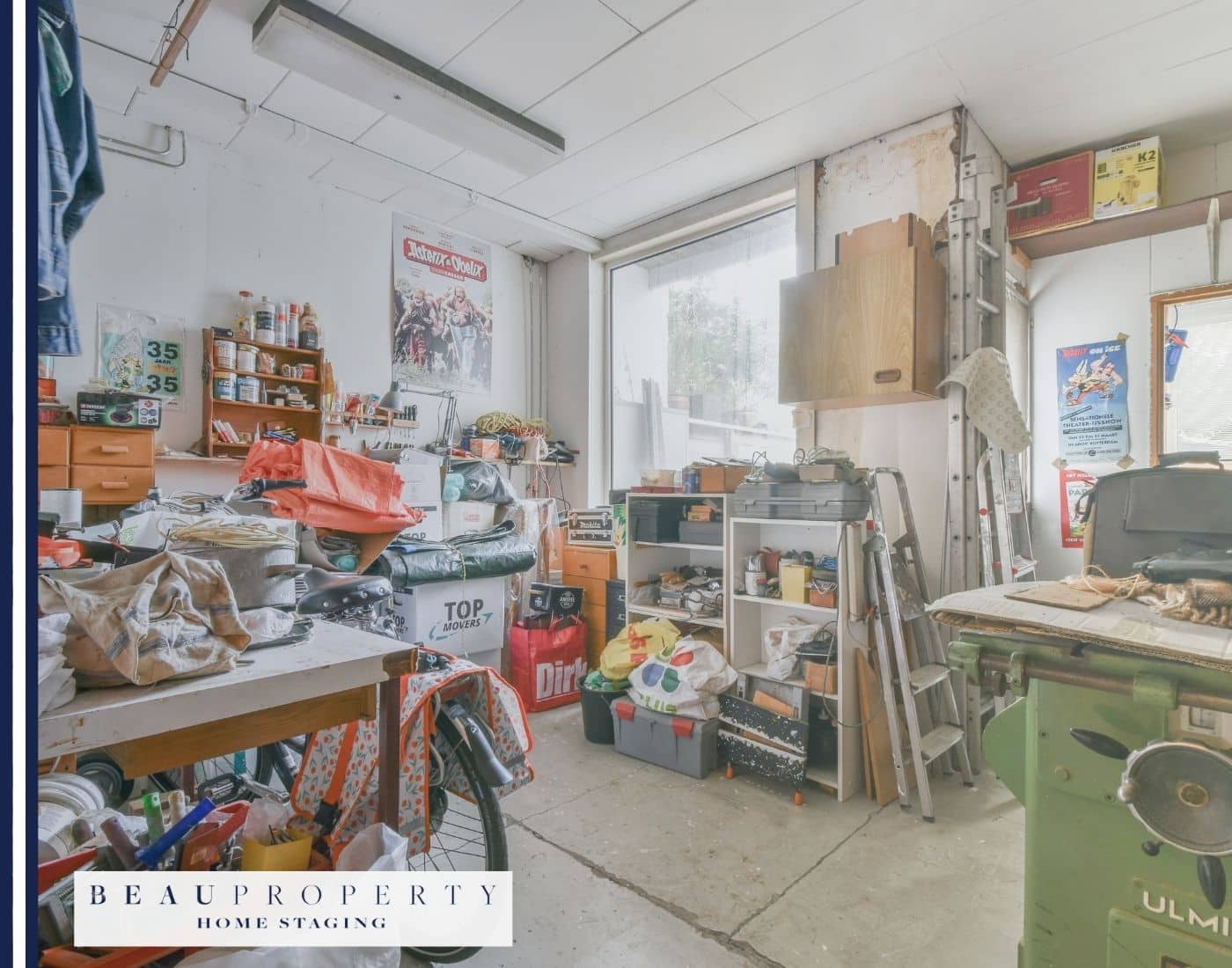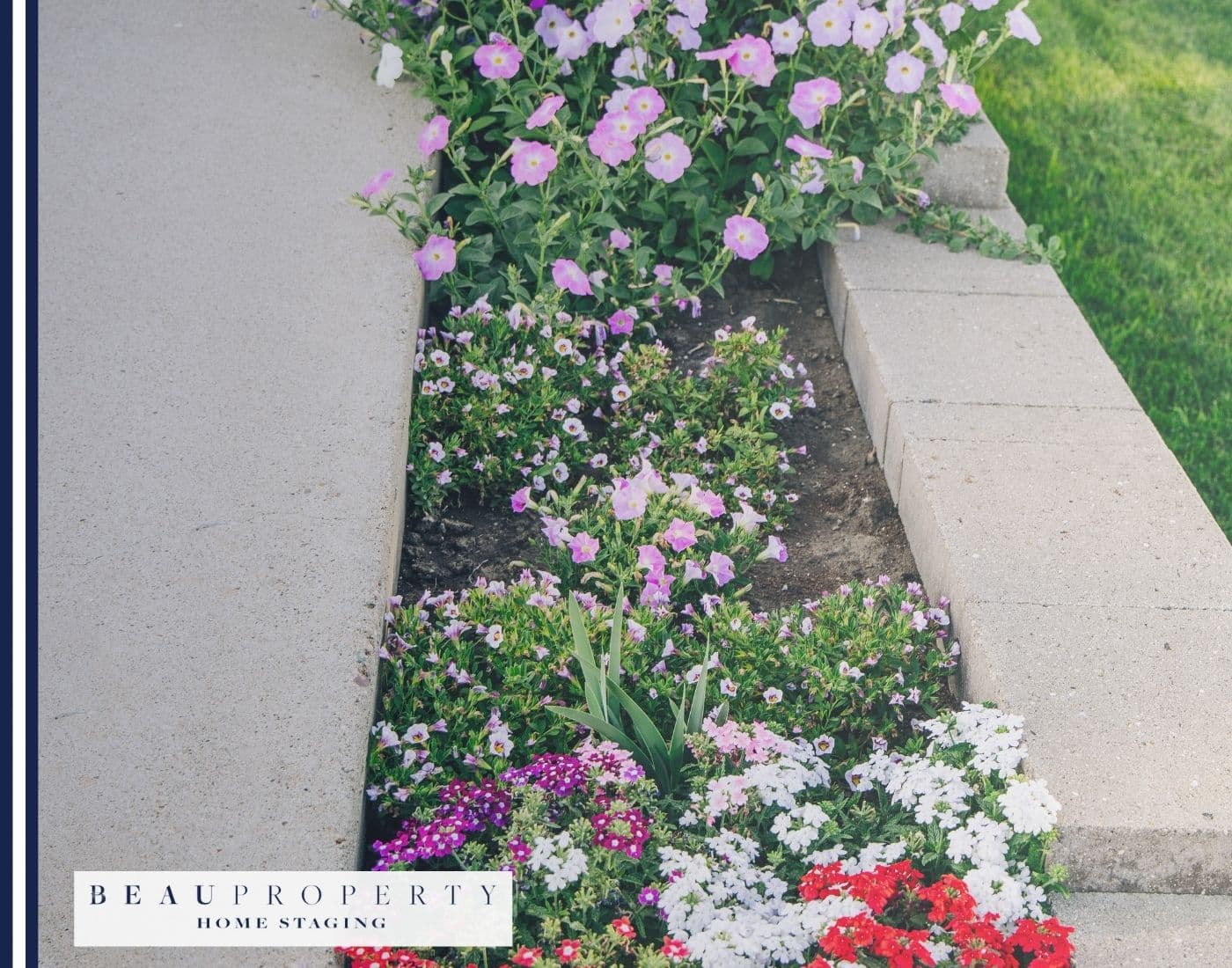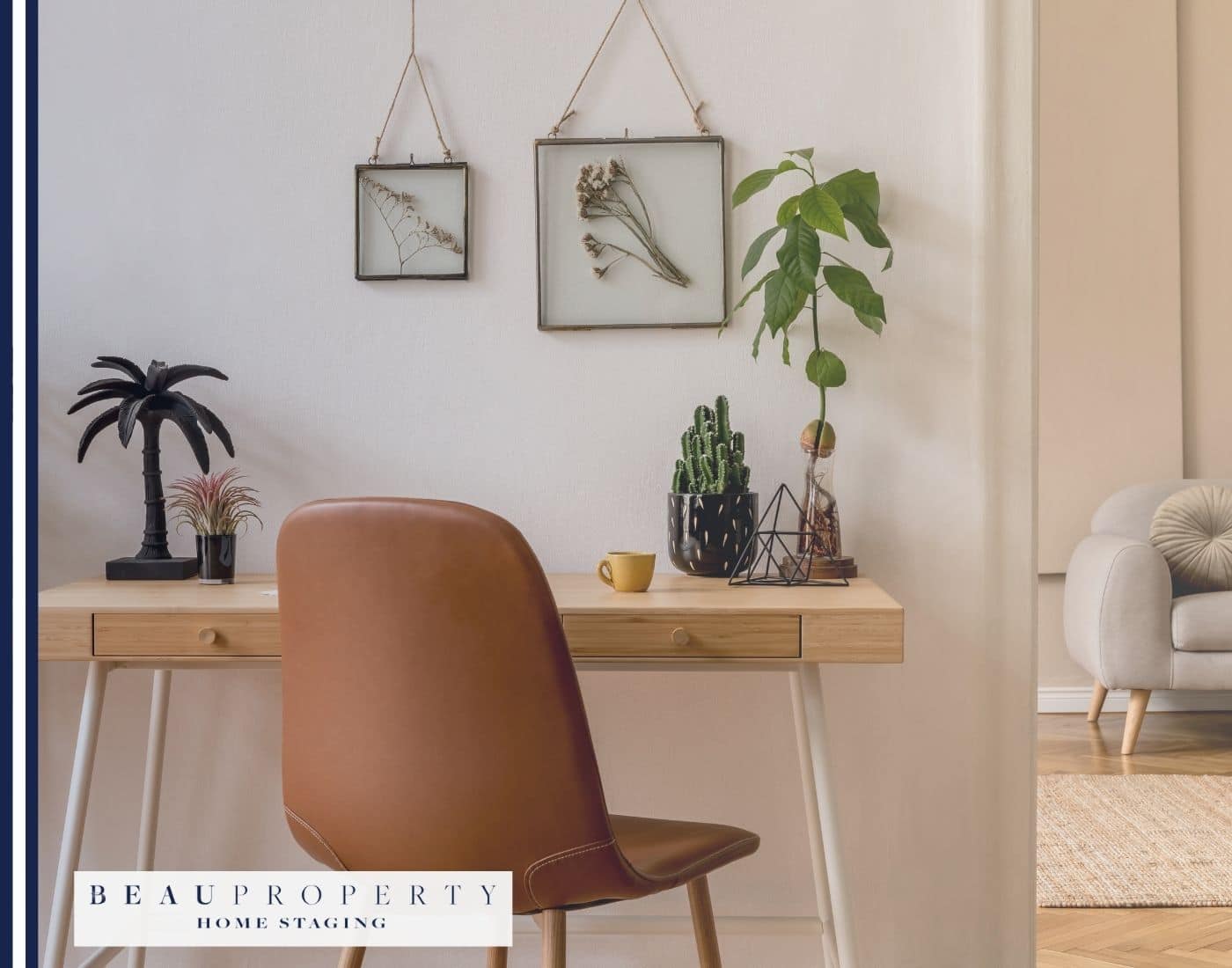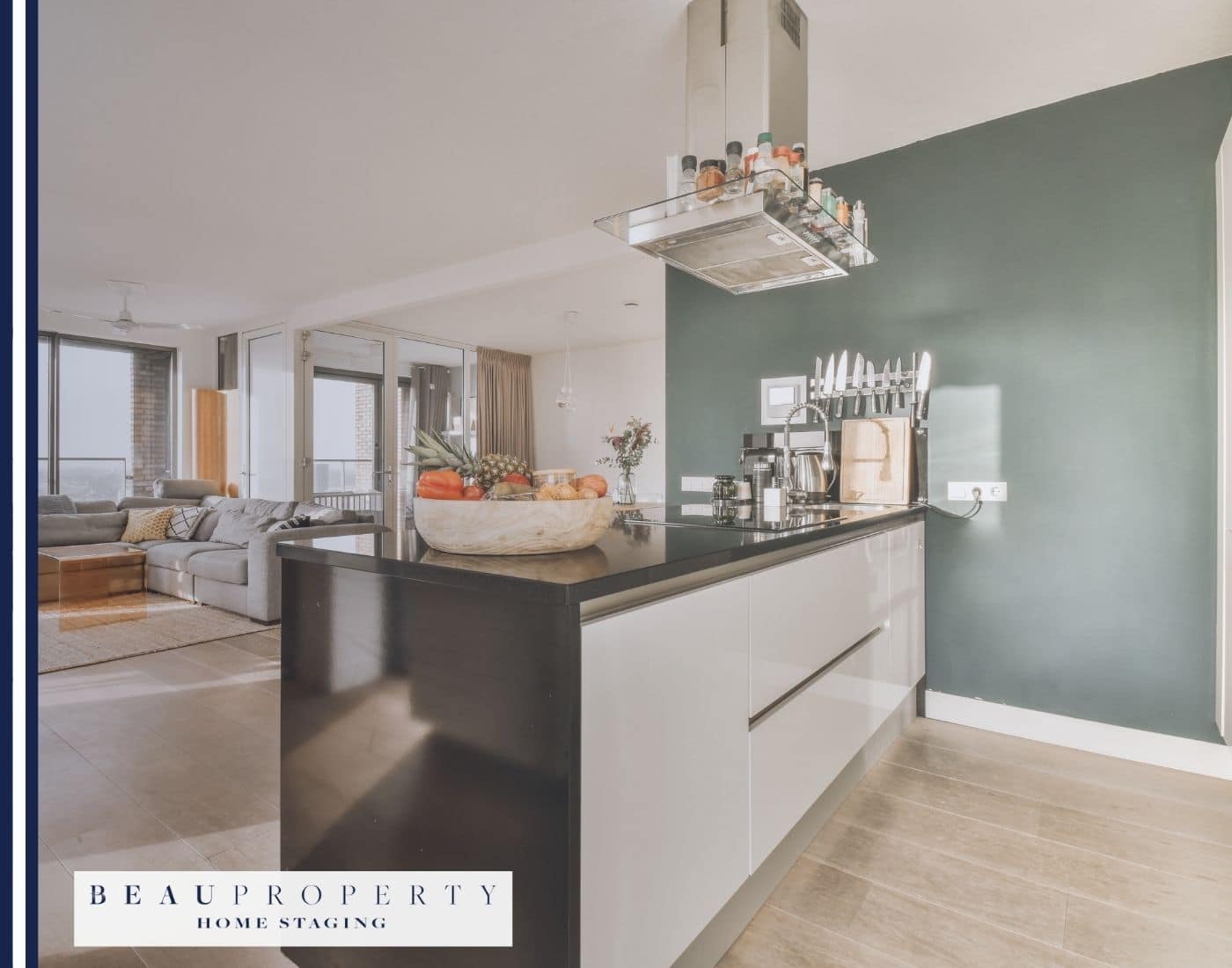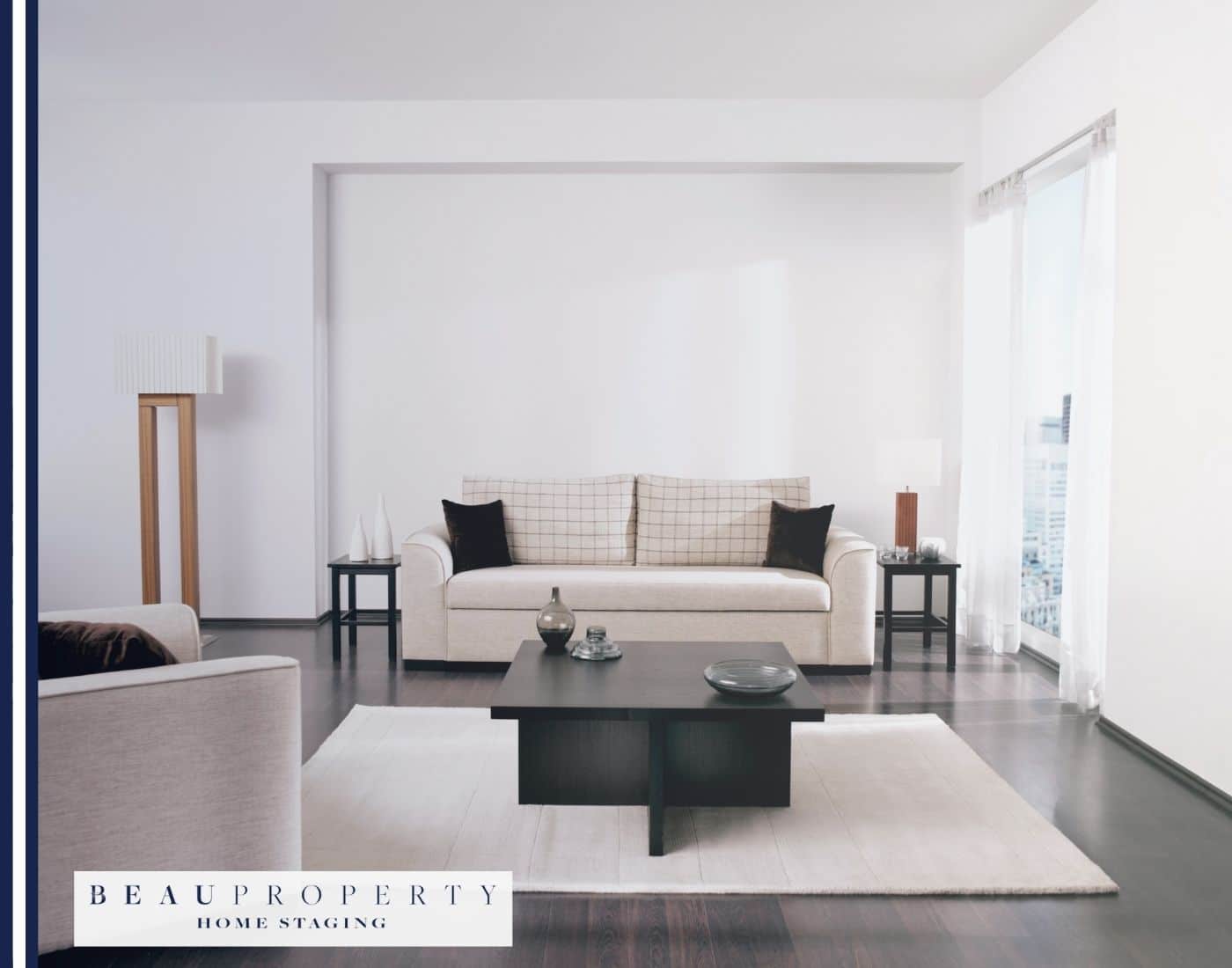Understanding Home Staging
Definition and Purpose of Home Staging as a Marketing Strategy
Home staging is a strategic process aimed at preparing a private residence for sale in the real estate marketplace. The primary purpose of home staging is to make the home appeal to the highest number of potential buyers, effectively turning the property into a marketable product. By presenting the home in the best possible light, staging helps to evoke an emotional connection from the buyer, enhancing the perceived value of the property and accelerating the sale process.
Effective home staging involves a range of activities such as redecorating, rearranging furniture, and thorough cleaning. These efforts aim to create an inviting atmosphere that appeals to the broadest audience possible. By focusing on the aesthetics and functionality of the home, staging helps buyers envision themselves living in the space, which is a crucial psychological driver in real estate transactions.
How Staging Highlights Best Features While Minimising Flaws
One of the core objectives of home staging is to highlight the best features of the property while downplaying any flaws. This can be accomplished through various techniques such as fresh painting, updating fixtures, and strategic furniture placement. By directing the buyer’s focus towards spacious rooms, ample storage, and quality finishes, staging delineates the home’s assets and creates a more welcoming and move-in-ready ambiance.
Additionally, effective staging involves fixing any visible flaws such as minor repairs and optimisation of lighting. The 3-foot 5-foot rule is an important concept in staging where small decorative elements are arranged to complement the larger elements like furniture, ensuring a cohesive design that appeals to potential buyers.
Why Staging is a Worthwhile Investment for Sellers
Staging is a worthwhile investment for sellers for several reasons. Firstly, it has been statistically proven that staged homes sell faster and often at a higher price compared to non-staged homes. Surveys reveal that staged homes spend about 73% less time on the market, significantly speeding up the sales process.
The financial benefits extend beyond quick sales; staged homes typically achieve higher selling prices. On average, a staged home can sell for 5% to 15% above the asking price, which highlights the significant return on investment. This uplift is due to the enhanced buyer perception of value and the emotional connection fostered through effective staging.
Moreover, staging provides insight into better utilisation of space and demonstrates the potential of the property to prospective buyers. It allows the property to stand out in a competitive market, thereby creating a favourable impression and increasing the likelihood of a successful sale.
By starting with a detailed initial assessment and planning phase, sellers are equipped to effectively prepare their homes for the market, involving decluttering, depersonalising, and various staging techniques. This careful preparation ultimately results in a more marketable property, adding considerable value to the sellers’ efforts.
Initial Assessment and Planning
Walking Through Each Room from a Buyer’s Perspective
The initial step in preparing a home for sale involves viewing it through the eyes of potential buyers. This unbiased lens is crucial in recognising both the strengths and weaknesses of the property. Start by methodically walking through each room, noting first impressions and overall impressions. Pay attention to the flow and feel of the spaces and how they might align with buyers’ lifestyles and preferences. This exercise helps you understand what aspects might deter or attract a buyer immediately upon entering your home.
Identifying Key Areas that Need Improvement
After walking through your home, compile a list of areas that need attention. Focus on aspects that can significantly influence a buyer’s decision, such as:
- Curb Appeal: The exterior of the home, including the front yard and entryway, as it sets the first impression.
- Functionality: Ensure that each room’s purpose is clear and that the space is optimally utilised.
- Maintenance Issues: Identify and plan to fix any evident issues, such as peeling paint, leaky faucets, or broken fixtures.
- Modernity: Consider updates that can make the home feel current, such as replacing outdated light fixtures or adding a fresh coat of paint in neutral colours.
Creating a Timeline and Budget for Staging Preparations
Once improvement areas are identified, it’s essential to develop a detailed plan to address these aspects within a specific timeframe and budget. Here’s how to proceed:
- Prioritise Tasks: Start with tasks that have the highest impact and are relatively easy to accomplish. For instance, decluttering, cleaning, and making minor repairs.
- Research Costs: Investigate the costs associated with necessary updates or renovations. Use resources to understand the price range for comparable properties and the potential return on investment of various improvements.
- Set a Budget: Determine a realistic budget for the staging preparations. Consider both minor expenses and potential high-cost updates.
- Create a Timeline: Develop a timeline that fits within your sales goals, considering factors like market conditions and the best times to list a property. Ensure all tasks are scheduled realistically without causing undue stress or delays.
Proper planning ensures that staging preparations are well-organised, stay within budget, and are completed in time to maximise the property’s appeal to potential buyers. Moving forward, your focus will shift towards practical tasks such as decluttering and depersonalising to set the stage for showcasing your home at its best.
Decluttering and Depersonalising
Removing Excess Furniture and Personal Items
A key strategy in preparing your home for sale involves removing unnecessary furniture and personal items. This helps create a spacious and neutral environment that appeals to potential buyers.
Begin by tackling each room one by one. For instance, assess your living room for items like additional chairs, side tables, or large decor pieces that crowd the space. Removing such items not only enhances the room’s size perception but also allows buyers to envision their own furniture in the space. For personal items, follow the principle of removing anything that personalises the space too much. This includes family heirlooms, trophies, and other unique items that might distract buyers from imagining the space as their own.
Organising Storage Spaces and Closets
Buyers pay attention to storage spaces, thus organised closets and storage areas can significantly increase the appeal of your home. Start by decluttering each closet and drawer. Remove what you don’t need and systematically organise what’s left. Use bins, containers, and other storage aids to neatly corral items, making the spaces appear spacious and functional.
Implement the 12-12-12 challenge: find 12 items to throw away, 12 to donate, and 12 to be put back in their correct place. This technique helps manage decluttering effectively. Categories like “keep,” “donate,” “sell,” and “discard” can streamline the process and make decision-making easier.
Eliminating Family Photos and Personal Collections
One of the most crucial aspects of depersonalising your home is removing family photos and personal collections. This step is vital as it helps the buyer visualise the home as their potential living space, rather than feeling like an intruder in someone else’s house.
For photos, take a walk around your home and take down any picture frames, photo albums, and portraits. Store these items away temporarily or pack them in boxes ready for your move. The same goes for personal collections; be it souvenirs from trips, art pieces, or any other collectable items, their removal aids in presenting a blank canvas to buyers.
These efforts in decluttering and depersonalising your home enhance its marketability and streamline the staging process for showcasing its best features, setting the context for the subsequent enhancements and preparations yet to come.
Maximising Curb Appeal
Enhancing the exterior appearance of your home is crucial in creating a favourable first impression on potential buyers. Curb appeal plays a pivotal role in attracting interest and setting the stage for a successful sale. This chapter delves into practical strategies for boosting your home’s exterior charm.
Enhancing the Exterior Appearance
The first step towards maximising curb appeal is improving your landscaping. Begin by cleaning up the yard and assessing the health of your plants. Remove any dead or unhealthy plants, prune overgrown trees and shrubs, and ensure that your garden beds are well-maintained. A layered landscape can add depth and interest, while flower beds and borders can make the biggest impact when it comes to enhancing your curb appeal landscaping. Consider lining the pathway to the front door with new flowers or planting a flower border along the front of your home’s exterior.
Regular maintenance tasks help keep the exterior of your home looking its best. Pressure washing exterior walls can remove dirt, mold, and grime, giving your home a fresh, clean appearance. Additionally, inspect your siding, trim, and other elements for cracks or deterioration, and perform necessary repairs to maintain a polished look.
Updating Outdoor Fixtures and House Numbers
Updating outdoor fixtures, such as lights and hardware, can significantly enhance the overall appeal of your home’s exterior. Consider using lighting with a warm white to neutral white colour temperature (around 3000K to 4000K) to create a pleasant ambiance. Thoughtfully designed outdoor lighting can highlight architectural features, create inviting outdoor spaces, and extend the usability of your yard.
House numbers should be clear, visible, and in good condition. If your current house numbers are faded or outdated, replacing them with new, stylish numbers can make a big difference. Ensure that they are well-lit and easily readable from the street to help potential buyers locate your home effortlessly.
Creating an Inviting Entrance with Seasonal Decorations
The entrance to your home is a focal point and should evoke a warm, welcoming feeling. Seasonal decorations can play a pivotal role in enhancing the entryway’s appeal. During the autumn, consider placing pumpkins, wreaths, and fall-themed planters at the doorway. In winter, a festive wreath, twinkling lights, and greenery can create a cosy and inviting atmosphere. For spring and summer, potted flowers, vibrant doormats, and fresh paint can highlight the freshness of the season.
Good lighting is also essential in any entryway. Ensure that the lighting is bright enough to navigate comfortably but not so harsh as to be uncomfortable. Adding a table lamp, chandelier, or pendant light can enhance the ambiance and make the entrance feel more homey and welcoming.
To maintain a clean and clutter-free entrance, regularly sweep the porch, remove cobwebs, and ensure that the doormat is in good condition. The overall goal is to create an entrance that beckons guests and potential buyers inside, making them feel at home as they step through the door.
Interior Staging Techniques
Applying the 3-Foot 5-Foot Rule
The 3-foot and 5-foot rule is an essential technique in home staging, designed to assess the visual impact of a room from two different perspectives: up close and from a short distance. This rule ensures that each space is appealing both on a detailed level (3-foot view) and from an overall room perspective (5-foot view).
- 3-Foot Perspective: Focus on small details such as furniture arrangement, decor, and potential clutter. Ensure each item contributes positively to the room’s aesthetics.
- 5-Foot Perspective: Assess the entire room’s balance and cohesion. Elements like lighting, wall art, and furniture placement should work together to create an open, inviting space.
By using this rule, sellers can refine both small details and the big picture, creating a polished and buyer-friendly environment that maximises visual appeal and ensures cohesion.
Optimal Furniture Placement
Proper furniture placement is crucial for creating a room that feels both functional and inviting. There are several key strategies to consider:
- Traffic Flow: Arrange furniture to facilitate easy movement throughout the room. Avoid blocking pathways and ensure there’s ample space for doors to open freely.
- Focal Point: Identify a focal point in the room, such as a fireplace, window view, or a piece of art, and arrange furniture to highlight this feature.
- Balance and Proportion: Avoid clustering large pieces on one side of the room. Pair heavier furniture with lighter pieces and mix different sizes to add depth and visual interest.
Furthermore, the most essential piece of furniture in the room, like a sofa or bed, should be positioned to face the focal point or the main entrance to the room. This enhances the flow and ensures the room feels welcoming.
Creating Conversational Groupings and Accessible Pathways
Creating conversational groupings is about arranging seating in a way that encourages interaction. Here are some effective strategies:
- Facing Furniture Toward Each Other: Arrange sofas and chairs to face each other, forming a circle, square, rectangle, L, or U-shape. This setup enhances open communication and makes the space more inviting for conversations.
- Spacing: Ensure there is adequate space between furniture pieces to maintain accessibility. At least 2-3 feet of walking space should be allowed between items to ensure easy movement.
By applying these techniques, you can create a harmonious and welcoming interior that appeals to potential buyers. Thoughtful staging will help maximise the home’s potential by creating spaces that feel both aesthetically pleasing and functionally sound.
Kitchen and Bathroom Focus
Updating Fixtures and Hardware for a Modern Look
Modernising your kitchen and bathroom can significantly increase the appeal of your home to potential buyers. One effective way to achieve this is by updating fixtures and hardware. In the bathroom, consider installing matte black or brushed finishes for taps and showerheads, which are currently in vogue. These finishes not only add a contemporary touch but are also easier to maintain as they show fewer watermarks.
For the kitchen, updating cabinet handles and lighting fixtures can create a fresh and modern look. Consider mixed metals for a dynamic and visually interesting space. Replacing dated ceramic knobs with sleek, modern profiles adds sophistication without a significant investment.
Maximising Storage and Counter Space
Optimising storage and counter space is essential in both kitchens and bathrooms, especially if the areas are small. In the kitchen, utilising vertical space by adding shelves above cabinets can provide additional storage without encroaching on counter space. Magnetic strips for knives or pots can free up drawer and counter space. Installing pull-out shelves and organisers within cabinets also enhances storage efficiency.
Maximise bathroom storage by using the area above the toilet for shelving or cabinets. Adding drawers or baskets under the sink can help keep the space tidy and increase storage capacity. Investing in organisers for inside bathroom cabinets helps keep items easily accessible and reduces clutter.
Ensuring Cleanliness and Maintenance of High-Traffic Areas
Cleanliness in kitchens and bathrooms is non-negotiable for prospective buyers. These high-traffic areas must be consistently pristine. Begin with a rigorous deep clean, ensuring all surfaces, tiles, and grout are spotless. Regularly wipe down countertops, sinks, and fixtures to maintain their shine and hygiene. In the bathroom, use antibacterial cleaners to keep surfaces free from bacteria and mould.
Establish a cleaning schedule to ensure these areas remain appealing. Floors should be swept and mopped frequently to remove dirt and debris. This not only improves the appearance but also maintains a sanitary environment, enhancing the overall perception of a well-cared-for home.
Common Staging Mistakes to Avoid
Over-Decorating and Cluttering Spaces
One of the most common mistakes in home staging is over-decorating. While it may be tempting to fill spaces with furniture and decor to create a cosy environment, this approach can overwhelm potential buyers. Over-decorating tends to create a cluttered look, making spaces feel smaller and less functional. The key is to adopt a “less is more” philosophy. Remove excess furniture and focus on highlighting the room’s best features. It’s also important to avoid too much wall decor, which can make a space feel visually busy and detract from its potential.
Poor Lighting Choices and Furniture Placement
Lighting plays a critical role in how a home is perceived. Poor lighting can make spaces feel dark and unwelcoming. Ensure all rooms are adequately lit, using a combination of natural light and well-placed artificial lighting. Avoid blocking windows with furniture or heavy drapes that obscure the natural light. Proper furniture placement is equally important. Poorly arranged furniture can impede the flow of a room, making it difficult for buyers to envision how they would use the space. Arrange furniture to create open pathways and conversational groupings for an inviting atmosphere.
Neglecting Cleaning and Maintenance Tasks
Cleanliness is paramount in home staging. A well-staged home can quickly be undermined by a lack of cleanliness or maintenance. Commonly overlooked cleaning tasks include cleaning light switches, doorknobs, baseboards, and inside appliances. Consistent maintenance is also crucial. Ensure all fixtures are in working order, and make minor repairs as needed. Keeping up with maintenance helps present the home as well-cared for, making it more appealing to buyers.
Final Preparations
Conducting a Final Walk-Through Inspection
Before opening your home to potential buyers, it’s crucial to conduct a final walk-through inspection. This ensures that everything is in pristine condition and ready for viewing. Here is a step-by-step checklist to guide you through the process:
- Verify Repairs: Ensure all agreed-upon repairs have been completed. Carry any written agreements regarding repairs for accuracy.
- Test Fixtures: Turn on and off every light fixture and verify that they are working.
- Check Plumbing: Run water in all sinks and check for leaks. Flush toilets to ensure they are functioning correctly.
- Inspect Appliances: Test all appliances, including the oven, dishwasher, and garbage disposal.
- Examine Doors and Windows: Open and close all doors and windows to make sure they operate smoothly.
- Inspect Ceilings, Walls, and Floors: Look for any new cracks or signs of damage.
- Review Exterior: Check the gutters, landscaping, and any outdoor fixtures to confirm they are in good condition.
Ensuring Proper Lighting and Accessibility
A well-lit home appears more inviting and spacious. Follow these tips to ensure your home is both accessible and well-lit:
- Replace Burnt Bulbs: Ensure all burnt-out bulbs are replaced. Consider higher wattage bulbs in darker areas.
- Optimise Natural Light: Clean windows and screens thoroughly to maximise natural light. Replace heavy curtains with sheer alternatives for a brighter ambiance.
- Strategically Place Lamps: In areas lacking natural light, use lamps and light fixtures to create a well-lit environment. This helps to highlight key areas and makes every room more welcoming.
- Clear Pathways: Make sure all walkways and entrances are unobstructed. Remove excess furniture to make paths and doorways easily accessible.
Preparing for Viewings and Open Houses
When preparing for viewings and open houses, attention to detail is vital. Here are some actionable steps to take:
- Deep Clean: Conduct a thorough cleaning of the entire home, ensuring all surfaces shine from ceiling fans to baseboards. Don’t forget interior windows, mirrors, and floors.
- Declutter: Eliminate unnecessary items and furniture to create a more spacious look. Organise closets and drawers since buyers may look inside.
- Neutralise Odours: Use air neutralisers and remove any sources of odour. Fresh scents create a pleasant environment.
- Depersonalise: Remove personal items such as family photos and any distinctive decorations. This helps buyers visualise themselves in the space.
- Safety First: Secure your personal information and valuable items. Make arrangements for pets to be out of the house during viewings.
- Final Touches: Just before the showing, crack open windows if the weather permits, turn on lights, and ensure everything is in its place. Taking out trash and removing bins from sight adds to the tidy presentation.
With these steps, your home will be in optimal condition for making the best impression. This meticulous preparation can lead to a successful and smooth home sale.

